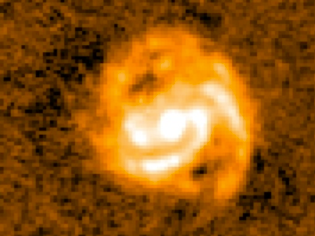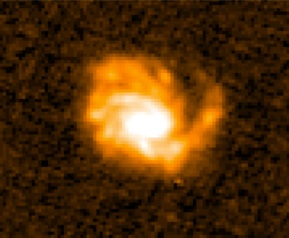Nearby Galaxies


The mm part of the spectrum is one of the least explored parts of a galaxy‘s spectral energy distribution (SED), yet it contains emission from three fundamentally important physical processes. These processes are thermal emission from dust, free-free emission from ionized gas and synchrotron emission from relativistic charged particles moving in the galactic magnetic field. We intend to investigate these physical processes and address particular scientific issues related to them. To this end we will select a sample of approximately 100 nearby galaxies from the Herschel Reference Survey (HRS). The HRS is a stellar mass selected (via K band luminosity) sample of nearby galaxies. The sample contains galaxies of varying morphological type that reside in distinctive environments (Virgo cluster and field). The sample also contains some of the largest angular sized objects in the sky and so will lead to spectacular publicity material. The importance of the NIKA2 data with regard to understanding the scientific issues discussed below arises because of the added value of data available at other wavelengths. All our targets have been observed at 100, 160, 250, 350 and 500μ by Herschel using SPIRE and PACS (Davies et al. 2012, Cortese et al., 2014) to constrain their dust emission. Almost 40 of the galaxies form part of the HERACLES survey (Leroy et al. 2009), so that they have high quality resolved HI and CO data. All the galaxies have high quality optical (SDSS), NIR (2MASS) and mid-IR (WISE) imagery and there are numerous and varied observations by Spitzer. At distances of less than 40 Mpc most of our galaxies are resolved (at a distance of 17 Mpc Virgo cluster galaxies are resolved at kpc scales by NIKA2). This is just about the same resolution as the Herschel 160μm PACS data as illustrated above.
In particular, there are 4 general science themes that are of interest to the study of nearby galaxies :
1. The long wavelength emissivity of dust and how it changes as a function of different galactic environments i.e. disc, spiral arm, nucleus, by combining the NIKA2 data with those obtained from Herschel. The NIKA2 data will provide additional data points for input into the comprehensive SED models of Galliano et al. (2008, 2011) and will enable to investigate changes in the emissivity index in a similar way to that done for M31 by Smith et al. (2012). Of particular interest is the possibility of excess long wavelength emission over and above that predicted by the Herschel data. This may indicate a significant cold dust component (T<15K) and/or physically different dust. As an illustration of what can be done we show in figures below a fit to the SED of two HRS galaxies M99 (NGC4254) and M100 (NGC4321). The model uses both the observed emission of stars and the dust reprocessed radiation to make a prediction of the 1.2 and 2.0 mm flux density which can then be compared with observation (Rémy-Ruyer et al, 2014).
2. An accurate measure of the thermal dust emission at 1.2 and particularly 2 mm requires accurate modeling of the synchrotron and free-free components. The perceived wisdom is that the 1.2 mm emission is primarily from thermal dust emission, while that at 2 mm will be contaminated by free-free emission. Longer than 2 mm we expect the emission to be dominated by the synchrotron emission from relativistic electrons.
3. Accurate maps of the dust mass surface density can be combined with the HI and H2 (CO) maps to give the spatial variation of the gas-to-dust ratio. The gas-to-dust ratio is a crucial input into chemical evolution models that predict the metallicity as a function of the gas fraction. When combined with the gas phase metallicity the fraction of metals in both gas and dust can be measured.
4. An important part of the science case for SKA is the continuum surveys they propose (EMU
for example). They plan to use these surveys to obtain estimates of the obscured star formation by using the radio with FIR (Herschel) data. A NIKA survey would provide the best determination of the FIR/radio/SFR correlation, with the SFR uniquely and accurately derived from the free-free emission and so it will provide a benchmark for SKA studies.
A sample of about 100 galaxies visible by IRAM and that are part of the Herschel Reference Survey (Boselli et al., 2010) can be selected. Although having a range of angular sizes (0.5<D25<6 arcmin) these galaxies are generally large enough to enable the resolution of structures on kpc scales, yet are small enough to be mapped in a reasonable amount of time.
Mis à jour le 29 septembre 2023


